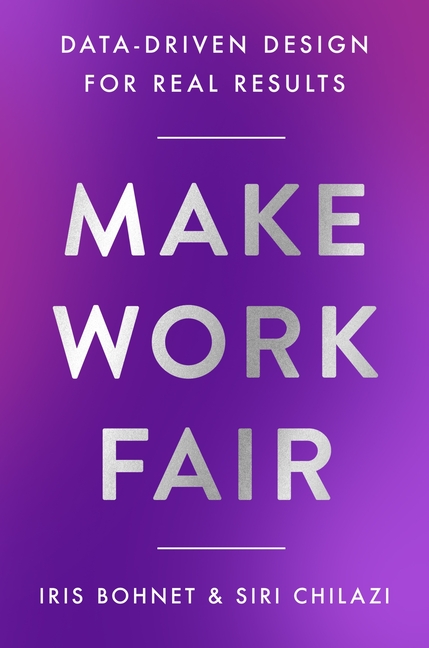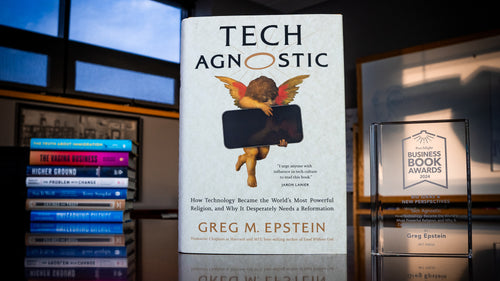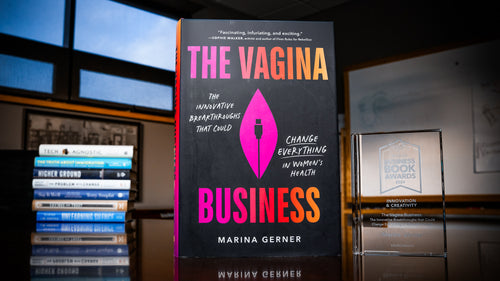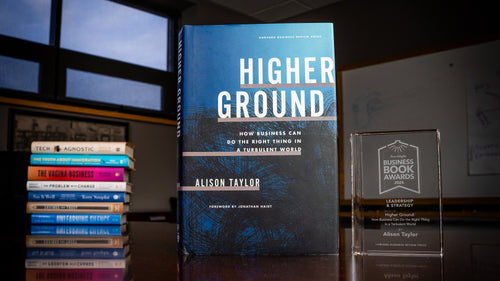An Excerpt from Make Work Fair
 To make their organizations more equitable, many well-meaning individuals and companies invest their time and resources in diversity, equity, and inclusion (DEI) initiatives. But because inequity is built into the structures, processes, and environments of our workplaces, adding these programs has been ineffective and often becomes a burden passed off to the individuals they are meant to help.
To make their organizations more equitable, many well-meaning individuals and companies invest their time and resources in diversity, equity, and inclusion (DEI) initiatives. But because inequity is built into the structures, processes, and environments of our workplaces, adding these programs has been ineffective and often becomes a burden passed off to the individuals they are meant to help.
In Make Work Fair, Iris Bohnet and Siri Chilazi offer data-backed, actionable solutions that build fairness into the very fabric of the workplace. Their methods—tested at many organizations, and grounded in data proven to work in the real world—help us make fairer—and simply better–decisions. Using their three-part framework, employees at all levels can execute and embed equity into their everyday practices.
Believing in equal opportunity is essential—but it isn’t enough. Offering an evidence-based blueprint, Make Work Fair shows you how to make it a reality, no matter your role, seniority, responsibilities, or where you are in the world.
The following excerpt is adapted from Chapter 12: Culture That Fosters Thriving, and focuses on the power of role models.
:::::
Remember how you felt when you first “met” Katherine Johnson, Mary Jackson, and Dorothy Vaughan, three brilliant mathematicians who worked as “human computers” for NASA at the Langley Research Center in Virginia during the space race in the 1960s? Perhaps you watched the film Hidden Figures, or read the nonfiction book with the same title by Margot Lee Shetterly that inspired the film. The three women—who excelled in counter-stereotypical roles, defied the odds, and surmounted enormous sexism and racism—have inspired many. Jackson became the first female African American engineer at NASA. Vaughan was the space agency’s first African American supervisor. And Johnson conducted crucial research on flight trajectories for various space shuttle missions that led her to receive the Presidential Medal of Freedom in 2015. Langley Research Center also named a building in her honor.
[…]
Seeing others who look like we do helps us imagine that we too could be scientists or mathematicians—or anything else we aim for. Within organizations, the sheer fact that there are women in counter-stereotypical roles sends a signal that “people like us” can thrive there.
Role models serve at least three functions. They inspire, suggesting that something that we might have thought was out-of-bounds is actually possible; they allow us to emulate them, showing what successful behaviors look like; and they serve as an indication for what an organization stands for. As such, role models are an important part of organizational culture. They are both a symbol for and shaper of “how we do things around here,” a common characterization of corporate culture we also subscribe to.
For culture to become real in an organization, we need to see more. Not only who people are and which roles they occupy but also how they behave and how they are treated.
[…]
You might be surprised by just how much role models matter. Even the relatively low-key exposure to role models that the Australian high schoolers experienced at the For Girls in Science event can make a difference. Working with the L’Oréal Foundation, researchers took a close look at a role modeling intervention in France that inspired the program. It consisted of one-hour in-class meetings in high schools where female scientists shared with students, female and male, what their lives as scientists looked like, including addressing gender stereotypes. Half of these scientists were young professionals; the other half were doctoral students and postdoctoral researchers in STEM.
The experiment included about 100 schools and almost 20,000 high schoolers in grades 10 and 12 (the final year when students choose which university program to enroll in) in the Paris region. Half of them were randomly chosen to be exposed to a role model and the other half served as a control group. The exposure to a female scientist did not matter for the tenth graders. However, the impact on twelfth-grade female students was remarkable. The intervention increased the share of women enrolling in undergraduate programs focused on mathematics, physics, computer science, or engineering by between 20 and 28 percent, with the strongest impact on female students who excelled at math. There was no impact on male students.
Women already working in STEM were the most successful role models, perhaps because they could more clearly describe a scientist’s career path and stimulate students’ aspirations—or because they just exuded a sense of normalcy.
[…]
People who embody our dreams are able to ever so slightly shift what we thought possible for ourselves. They may also, as psychologist Nilanjana Dasgupta put it, serve as “social vaccines who increase social belonging and inoculate fellow group members’ self-concept against stereotypes.” Research specifically examining the role model effect found that similarity, desirability, and attainability are key. Same-gender and same-race role models tend to have more impact, particularly in counter-stereotypical domains.
Mentors and advisors are an interesting case in point. Many colleges provide their students with first-year advisors to help them navigate the new academic landscape. Working with the American University of Beirut, a private four-year college in Lebanon, researchers took a look at whether the gender of the advisors influenced the types of majors students chose. Students could not select their advisors but were randomly assigned one. Similar to colleges in the United States, at this university male students have traditionally been almost three times as likely to declare a major in STEM as their female counterparts.
Exposure to a female rather than a male science advisor doubled the likelihood that women enrolled in a STEM field. The gender of the advisor was not significant for male students. The reduction of the gender gap almost completely carried over to graduation rates four years later, as these women tended to stick with their choices. Like in France, having a female role model available had the biggest impact on the most mathematically gifted female students who already had the ability but needed a little nudge to take the plunge into one of the heavily male-dominated STEM fields.
[…]
The role model effect is surprisingly powerful. To make it work, focus on role models who are similar, whose careers are desirable, and whose positions are attainable. If you are able, be one yourself. Otherwise, point such role models out to your colleagues. Or better yet, promote their visibility throughout your whole team or organization. And increase representation. We need to see to believe.
Excerpted from Make Work Fair: Data-Driven Design for Real Results.
Published by Harper Business, an imprint of HarperCollins Publishers.
Copyright © 2025 by Iris Bohnet and Siri Chilazi.
All rights reserved.



